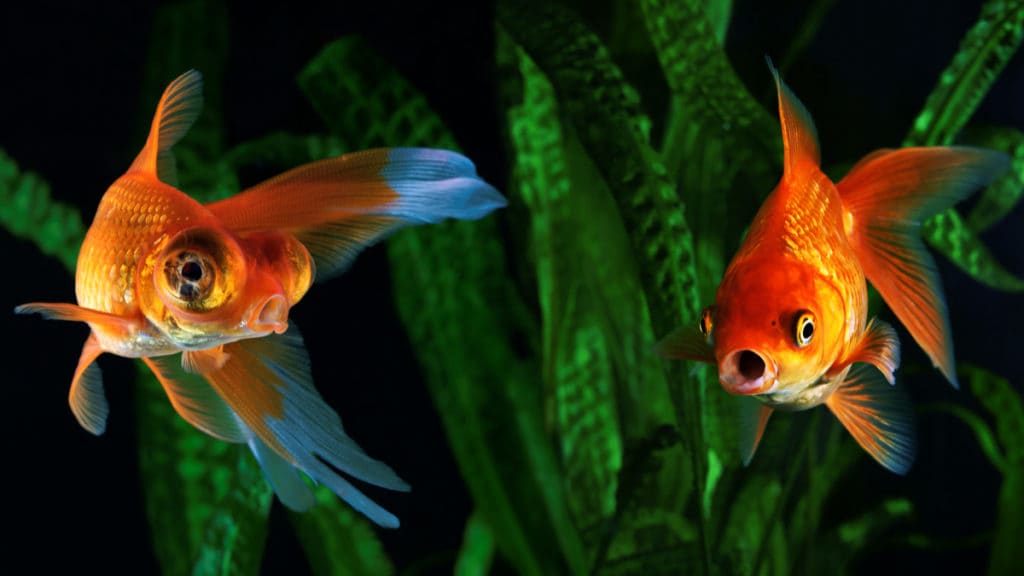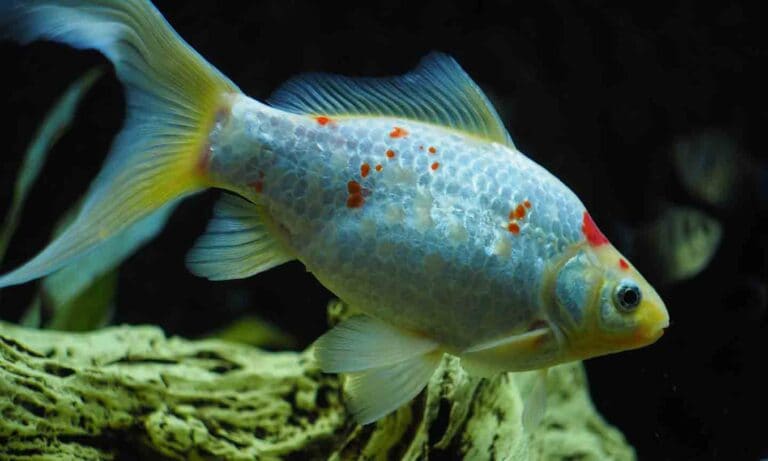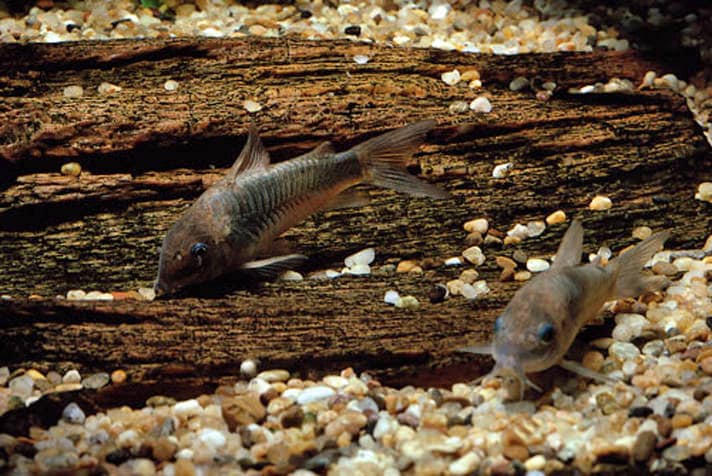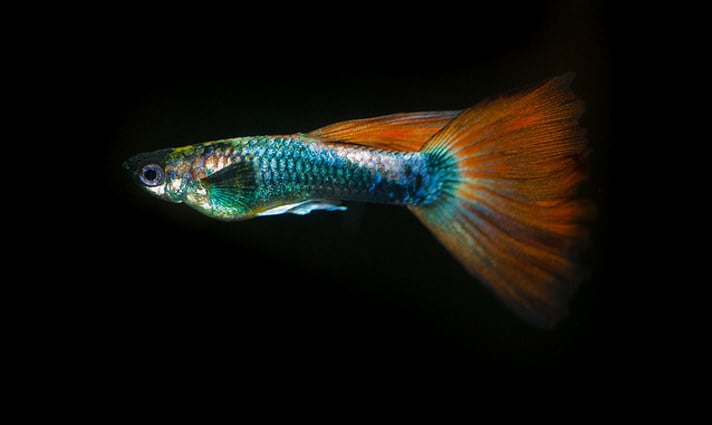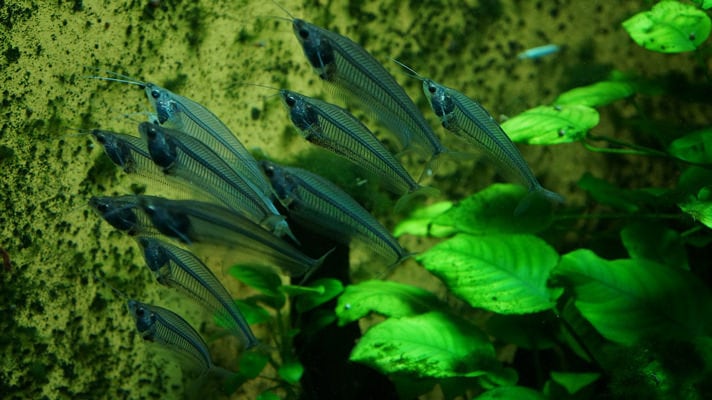Popeye, or exophthalmia, is swelling of one or both eyes of the aquarium fish. It is difficult to treat but easy to prevent.
Popeye Identification in Fish
One or both eyes of the aquarium fish bulge outwards, hence the “popeye” name. The outer surface of the fish’s eye may be white or cloudy. Popeye can be referred to as unilateral (just one eye affected) or bilateral (both eyes affected).
Popeye is unlikely to be confused with any other diseases in fish.
Popeye Pathology in Fish
The swelling of the fish’s eye is caused by tissue fluid leaking into the region behind the eyeball. Pressure builds up as the amount of fluid increases, forcing the fish’s eyeball outward. Opportunistic bacterial infections commonly occur. The cloudiness of the fish’s eye is caused by damage to the cornea (the transparent layer of skin that covers the pupil).
Popeye in fish is most frequently caused by continual exposure to chronically poor (rather than acutely lethal) water conditions. Popeye is consequently most common in aquariums that are overcrowded or receive infrequent water changes. Not surprisingly, popeye is most often seen in aquariums where messy fish are kept in unhygienic conditions, typically goldfish and large cichlids.
Unilateral vs. Bilateral Popeye in Fish
While bilateral popeye is often simply a reaction to poor aquarium water conditions, unilateral popeye may be caused by physical damage to the fish. In either case, optimizing water quality in the aquarium will be required before the fish can recover, but unilateral popeye will also demand further considerations. Sources of physical damage to the fish’s eye can include rough handling, collisions between fish and solid objects, failed predation attempts and aggression between fish.
Popeye Treatment in Fish
Popeye is difficult to treat in fish because it consists of three different sets of problems. First there is damage to the cornea. Next there is accumulation of fluid behind the fish’s eyeball, and finally there is an opportunistic bacterial infection.
Minor damage to the cornea can improve over time, assuming the fish is provided with optimal water conditions and a balanced, vitamin-rich diet.
Swelling of the fish’s eye will diminish with time, assuming the fish is healthy in other regards, and is provided with optimal water conditions and a healthy diet. Epsom salt helps to reduce swelling when used at a dose of 1 to 3 teaspoons per 5 gallons. While Epsom salt can be used in both freshwater and saltwater aquariums, fish are best treated this way in a quarantine tank rather than the main display aquarium.
Antibiotics and antibacterials similar to those used to treat fin rot are useful in preventing damage to the cornea from turning into full-blown popeye. But once popeye develops, different medications will be required. Use antibiotics formulated for use against internal and systemic infections, preferably administered in food rather than added to the water.
Popeye Prognosis in Fish
Given prompt treatment and good environmental conditions, popeye can get better with time. It takes weeks or months for the swelling to diminish, and damage to the cornea of the fish can be even slower to heal.
However, severe damage to the fish’s eye may never heal completely, even if the swelling itself goes down. In extreme cases, the fish’s eye may be so badly damaged it decays and falls off the fish. Blindness in one eye does not seem to incapacitate fish unduly, though carnivorous fish that hunt by sight may find the loss difficult to get used to. Keep such fish away from boisterous competitors, and use forceps to handfeed them if they have trouble feeding themselves.
Because popeye is usually caused by negative environmental aquarium factors, fish suffering from popeye will often be stressed or diseased in other ways, as well. While popeye itself isn’t likely to kill a fish, affected fish could die from other problems, such as septicemia and Hexamita infections.
Popeye Prevention in Fish
In terms of water quality, nitrate levels above 20 mg/l are a good indication of overstocking, overfeeding and/or insufficient water changes. These are precisely the factors that make popeye more likely.
Lacking eyelids, fish eyes are easily damaged by clumsy handling. Take care to avoid using coarse or abrasive fish nets, and ideally use fish nets to drive fish into plastic containers rather than for netting them directly. Fish are most likely to damage their eyes when alarmed, commonly by bumping into abrasive rocks or into the walls or hood of the aquarium. Some fish are more nervous than others, and care should be taken not to mix jumpy fish species with boisterous or aggressive fish species.
Turning on the aquarium lights can cause nervous fish to jump or thrash about and injure themselves in the process. In a room that receives morning sunlight, this may not be much of an issue, but in dark rooms be sure to turn the room lights on a few minutes before switching on the aquarium lights. Do the reverse at night, leaving the room lights on for a few minutes after turning the aquarium lights off.
Popeye can be prevented simply by providing fish with a healthy aquarium environment and by taking steps to minimize the risk of physical damage.
By: Chewy Editorial
Featured Image: Mirek Kijewski/Shutterstock.com
Share:
